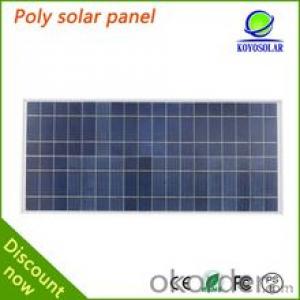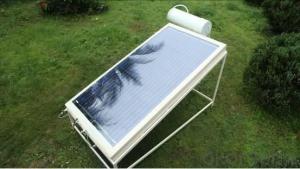A grade certified solar cell mono/poly crystalline 156mm solar cell cnbm
- Loading Port:
- Qingdao
- Payment Terms:
- TT or LC
- Min Order Qty:
- 100 set
- Supply Capability:
- 300000 set/month
OKorder Service Pledge
OKorder Financial Service
You Might Also Like
Quick Details
| Place of Origin: | China (Mainland) | Brand Name: | cnbm | Model Number: | T1M-1780 |
| Material: | Polycrystalline Silicon | Size: | 156*156mm | Number of Cells: | 1pcs |
| Max. Power: | 4.4watt | Size:: | 156*156mm | Material:: | Polycrystalline Silicon |
| Materials:: | poly cell, broken solar cells for sale | Certificate:: | ISO9001,CE/TUV | solar cell:: | poly solar cell,broken solar cells for sale |
| Front side:: | Two/three 1.9/1.6mm wide silver bus ba | Tickness:: | 200μm±30μm | OEM Order:: | Acceptable |
| Back side:: | 3mm wide silver soldering pads |
Packaging & Delivery
| Packaging Detail: | 100pcs in one carton, one carton gross weight is about 2kg |
| Delivery Detail: | 1days after your paymen |
mono/polycrystalline solar cell
1.16.8%~18.25% efficiency
2.100% good quality
3.ISO9001/ISO14001/TUV/CE/UL
4. A grade cell
solar cell All Your Best Choice

| Physical Characteristics of broken solar cells for sale | ||||||||||||
| Dimension: | 156mm×156mm±0.5mm | |||||||||||
| Diagonal: | 220mm±0.5mm | |||||||||||
| Thickness(Si): | 200±20 μm | |||||||||||
| Front(-) | anti-reflecting coating (silicon nitride); | |||||||||||
| 1.5mm wide bus bars; | ||||||||||||
| Distance between bus bars: 51mm . | ||||||||||||
| Back(+) | Aluminum back surface field; | |||||||||||
| 2.0mm wide soldering pads; | ||||||||||||
| Distance between bus bars :51mm . | ||||||||||||
| Electrical Characteristics of broken solar cells for sale | ||||||||||||
| Efficiency(%) | 18 | 17.8 | 17.6 | 17.4 | 17.2 | 16.8 | 16.6 | 16.4 | 16.2 | 16 | 15.8 | 15.6 |
| Pmpp(W) | 4.33 | 4.29 | 4.24 | 4.19 | 4.14 | 4.09 | 4.04 | 3.99 | 3.94 | 3.9 | 3.86 | 3.82 |
| Umpp(V) | 0.53 | 0.527 | 0.524 | 0.521 | 0.518 | 0.516 | 0.514 | 0.511 | 0.509 | 0.506 | 0.503 | 0.501 |
| Impp(A) | 8.159 | 8.126 | 8.081 | 8.035 | 7.99 | 7.938 | 7.876 | 7.813 | 7.754 | 7.698 | 7.642 | 7.586 |
| Uoc(V) | 0.633 | 0.631 | 0.628 | 0.625 | 0.623 | 0.62 | 0.618 | 0.617 | 0.615 | 0.613 | 0.611 | 0.609 |
| Isc(A) | 8.709 | 8.677 | 8.629 | 8.578 | 8.531 | 8.478 | 8.419 | 8.356 | 8.289 | 8.22 | 8.151 | 8.083 |

Monocrystalline 125/156mm and polycyrstalline156 solar cell more pictures:
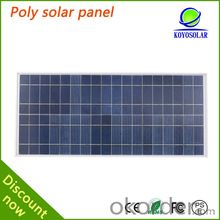
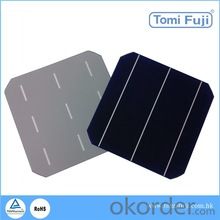
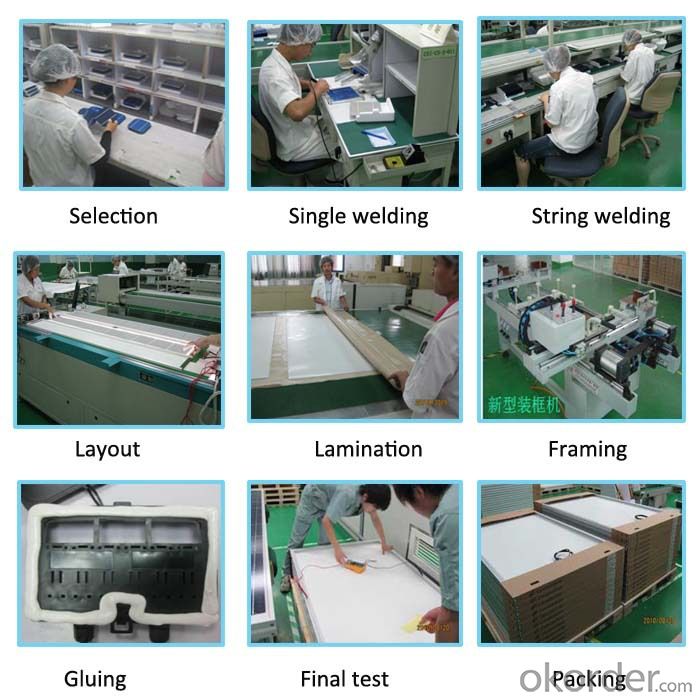
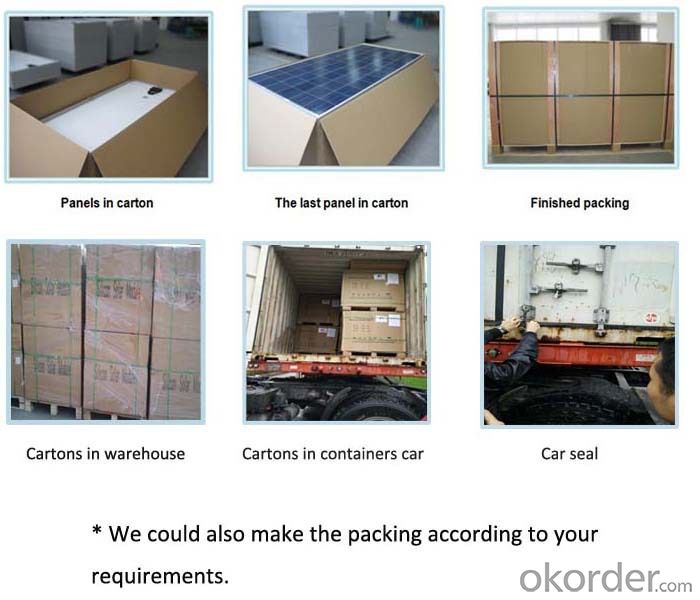
Packaging
u 100pcs/ctn, one carton is about 2kg.
u Individual packing requirement is acceptable.
By Sea | Delivery from Shanghai or Ningbo seaport |
By Air | Departure from Shanghai Pudong Airport |
By Express | Post by DHL, EMS, UPS, TNT. |
Although solar cells surplus, consumption tends to be active
All along, China's solar cell industry is facing surplus. Thus, the solar cell industry needs contact with the related industries closely, in order to open up a wide range of consumer markets.
Integration of cross-border trade, cross-border products will become a new trend in the production of solar energy industry. Solar power technology and consumer products combine more flexible.
Although solar cells are surplus, faced with increasingly serious energy crisis and air pollution, solar PV is becoming the mainstream in the form of new energy sources. With more perfect industry chain, solar energy products consumption has not only limited to large-scale power, and become more diverse. Gradually open up the domestic market and jump start the market, so that once plagued the Chinese PV industry began to pick up.
Solar cell industry has demonstrated a new application. With the use of new technology and declining costs, increasing the degree of market segmentation, the combine of solar technology and civil products is full of vitality. Integration of cross-border trade, cross-border products will become a new trend in the production of solar energy industry.
Currently, the national multi-sectoral support policies are still intensive introduction. Driven by the favorable policies, gradually increase the spending power of the solar cell. At the same time, the export structure of the solar cells are also more reasonable state, especially in Asian emerging markets continue to expand.
This year, with the decline in the cost of electricity, continued growth in overall industry demand and increasingly rational investment, coupled with smart grid construction, and constantly open up new markets effectively promote PV production capacity has expanded capacity utilization will also increase steadily. Forced downward pressure on the cost of power generation, high efficiency, the new demand for low-cost photovoltaic cell products will continue to grow in the future; it has also become the focus of the major manufacturers of photovoltaic production layout.
- Q:How are solar cells affected by temperature?
- Solar cells are affected by temperature in that higher temperatures can decrease their efficiency and power output.
- Q:Can solar cells be used for military applications?
- Yes, solar cells can be used for military applications. They can provide a reliable and independent source of power for various military equipment, including remote surveillance systems, communication devices, and even powering military bases or remote outposts. Solar cells offer the advantage of being lightweight, portable, and environmentally friendly, making them suitable for a range of military operations and reducing reliance on traditional fuel sources.
- Q:Can solar cells be used in remote monitoring systems?
- Yes, solar cells can be used in remote monitoring systems. Solar cells provide a reliable and sustainable source of energy, making them ideal for powering remote monitoring systems that may be located in areas without access to an electricity grid. They can efficiently convert sunlight into electricity, allowing these systems to operate continuously and independently. Additionally, solar cells are low maintenance and can withstand harsh environmental conditions, making them well-suited for remote monitoring applications.
- Q:How do solar cells perform in areas with extreme temperature fluctuations?
- Solar cells typically perform well in areas with extreme temperature fluctuations. However, excessive heat can slightly reduce their efficiency, while extreme cold can temporarily decrease their power output. Nonetheless, solar cells are designed to withstand a wide range of temperatures, and advancements in technology have improved their performance and durability in extreme weather conditions.
- Q:How do solar cells perform in regions with frequent thunderstorms?
- Solar cells perform less efficiently in regions with frequent thunderstorms. Thunderstorms often bring heavy cloud cover and reduced sunlight, which significantly impacts the generation of solar energy. Additionally, the presence of lightning poses a risk to the solar panels themselves, potentially damaging or destroying them. Therefore, regions with frequent thunderstorms may not be ideal for solar energy production.
- Q:Can solar cells be used in water?
- Yes, solar cells can be used in water. Some solar panels are specifically designed to be used in water environments, such as floating solar panels used in reservoirs, lakes, and other bodies of water. These panels are waterproof and can efficiently generate electricity even when partially submerged.
- Q:How do solar cells perform in areas with high levels of noise pollution?
- Solar cells are not affected by noise pollution as they rely solely on sunlight to generate electricity, making them effective even in areas with high levels of noise pollution.
- Q:How do solar cells perform in areas with high levels of dust storms?
- Solar cells can be affected by high levels of dust storms as the accumulation of dust and debris on their surfaces reduces their efficiency. Dust particles can block sunlight from reaching the solar cells, which in turn reduces their energy production. Regular cleaning and maintenance are necessary in areas with high levels of dust storms to ensure optimal performance of solar cells.
- Q:Can solar cells power an entire house?
- Yes, solar cells have the potential to power an entire house. With advancements in technology and proper installation of solar panels, it is possible to generate enough electricity to meet the energy needs of a household. However, the feasibility of this depends on various factors such as the size of the solar panel system, the energy consumption of the house, and the availability of sunlight in the area.
- Q:How are solar cells connected in a solar panel?
- Solar cells are connected in a solar panel through a series of electrical connections called interconnects. These interconnects form a circuit that allows the flow of electrons between the individual solar cells, ensuring that the electrical current generated by each cell is combined to produce a higher voltage and power output.
1. Manufacturer Overview |
|
|---|---|
| Location | |
| Year Established | |
| Annual Output Value | |
| Main Markets | |
| Company Certifications | |
2. Manufacturer Certificates |
|
|---|---|
| a) Certification Name | |
| Range | |
| Reference | |
| Validity Period | |
3. Manufacturer Capability |
|
|---|---|
| a)Trade Capacity | |
| Nearest Port | |
| Export Percentage | |
| No.of Employees in Trade Department | |
| Language Spoken: | |
| b)Factory Information | |
| Factory Size: | |
| No. of Production Lines | |
| Contract Manufacturing | |
| Product Price Range | |
Send your message to us
A grade certified solar cell mono/poly crystalline 156mm solar cell cnbm
- Loading Port:
- Qingdao
- Payment Terms:
- TT or LC
- Min Order Qty:
- 100 set
- Supply Capability:
- 300000 set/month
OKorder Service Pledge
OKorder Financial Service
Similar products
New products
Hot products
Hot Searches
Related keywords

